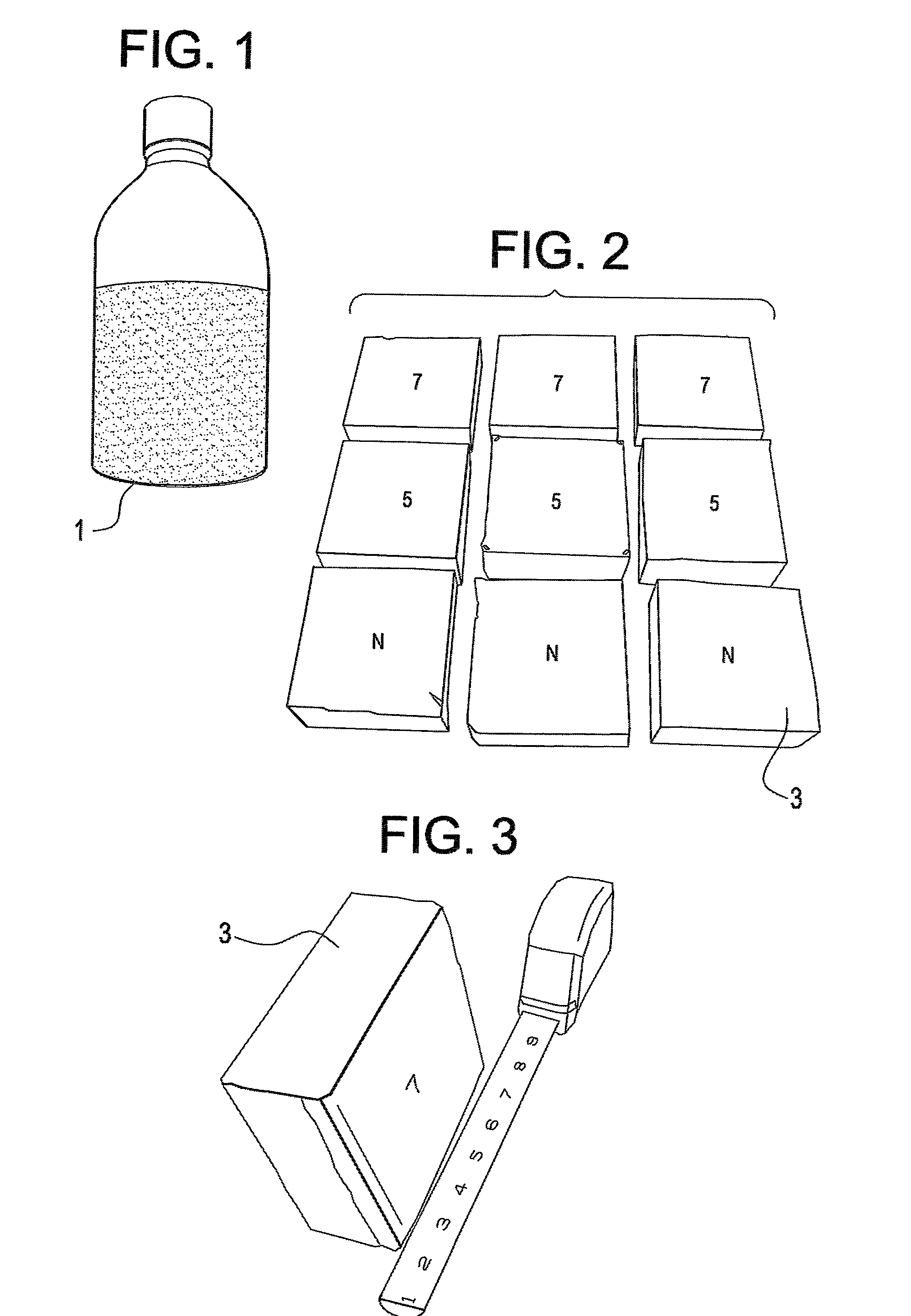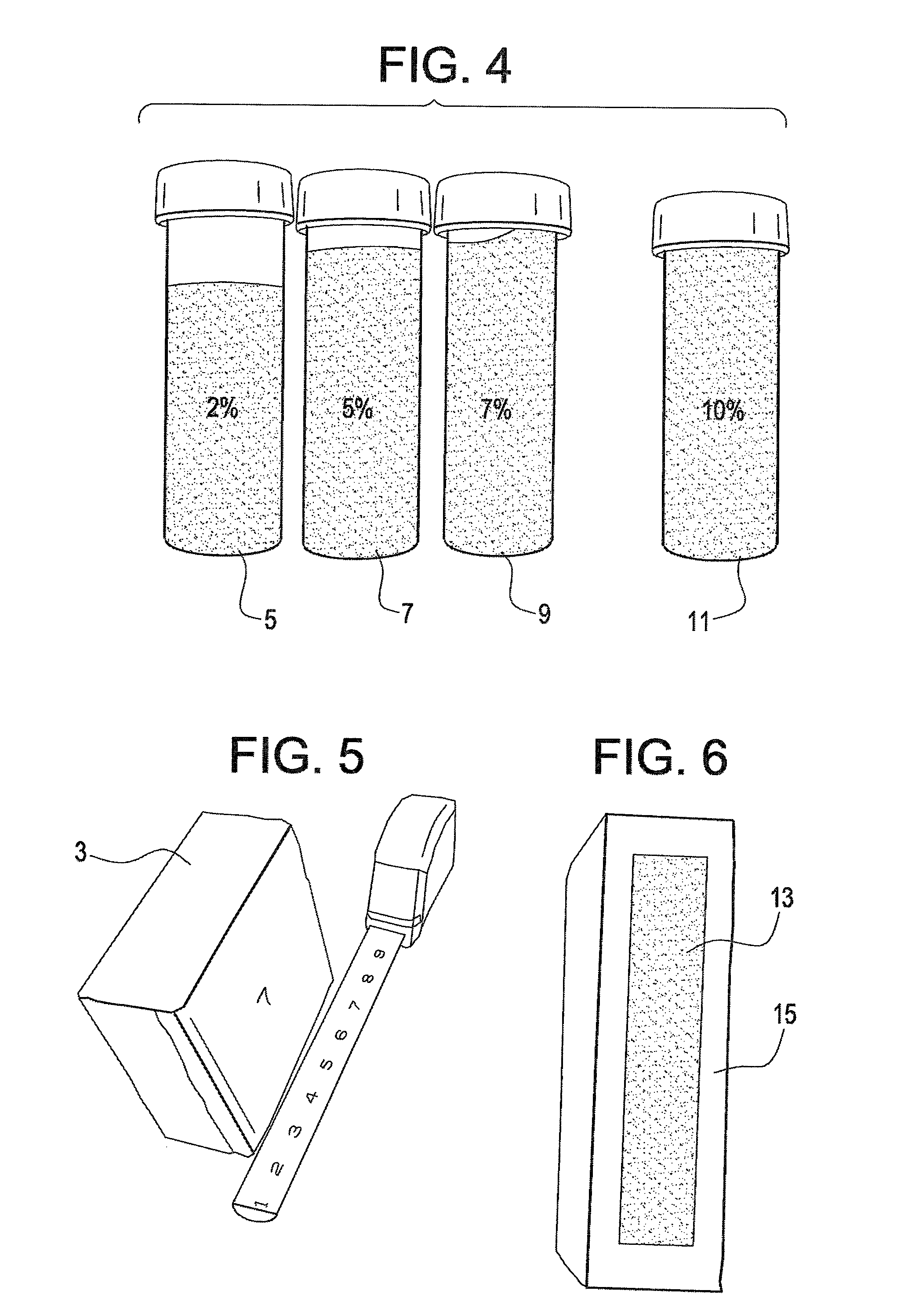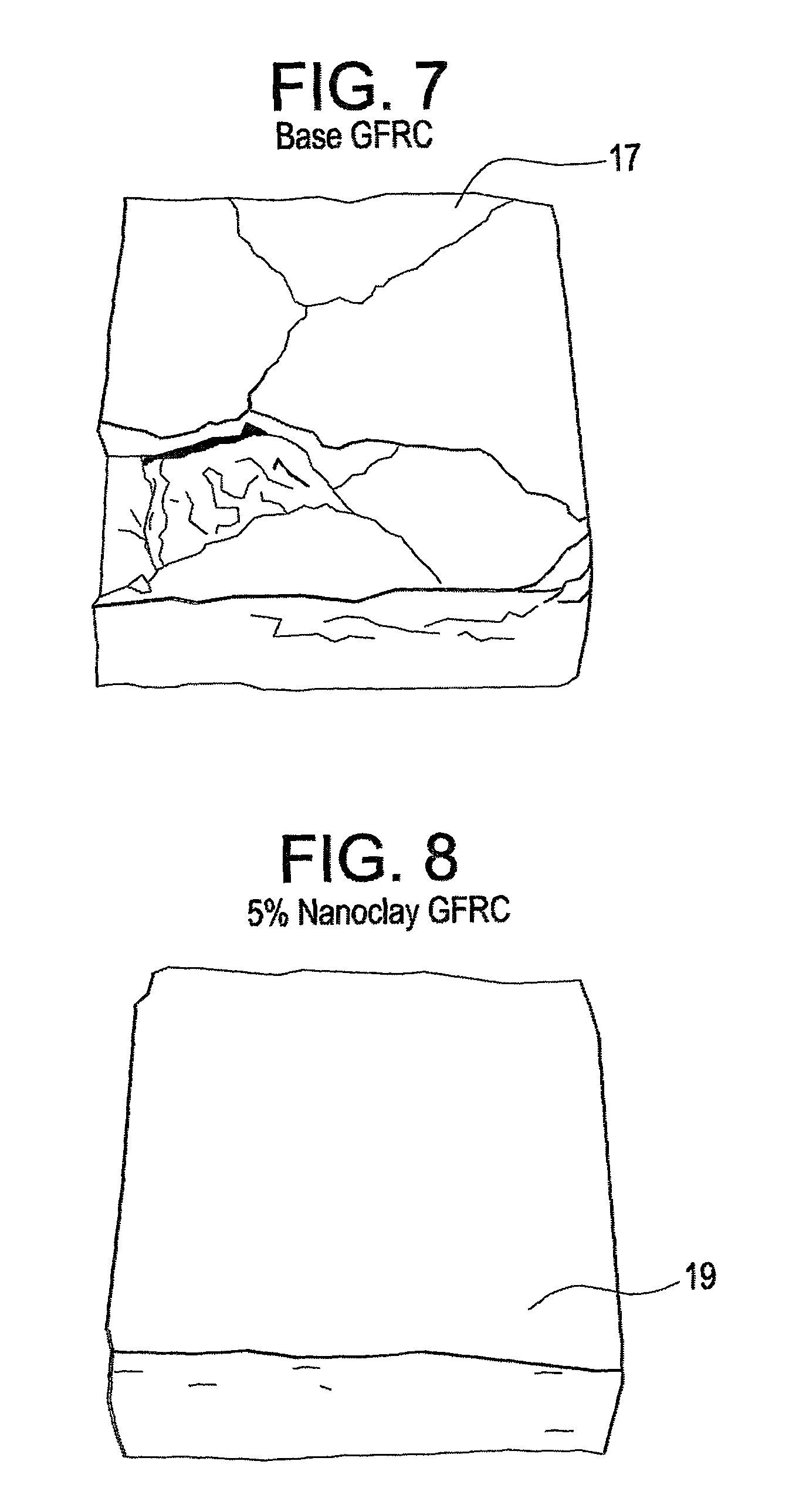Highly flame retardant foam concrete
a foam concrete and high-flammability technology, applied in the field of consumer packaging, protective coatings and flame-resistant construction materials, can solve the problems of limiting the use of steel and aluminum rather than the inside walls, building commercial buildings and going to a wider market, and serious drawbacks, so as to reduce the emission of toxic gases and improve flame-retardant properties.
- Summary
- Abstract
- Description
- Claims
- Application Information
AI Technical Summary
Benefits of technology
Problems solved by technology
Method used
Image
Examples
Embodiment Construction
[0033]To manufacture the GFRC incorporated with Nanoclay (Nano GFRC), a dispersion of nanoclay in water is prepared. Two different concentrations of nanoclay-water dispersions were prepared: 5% and 7%. 7% by weight has been determined to be the highest possible uniform dispersion amount of nanoclay in water. Agglomerations of nanoclay were observed above the 7% limit. Typical process of dispersion follows the steps below:[0034]1. The required amount of water is heated to 80-90° C.[0035]2. When the water temperature stabilizes between 80-90° C., add the calculated amount of nanoclay while stirring the water using a magnetic stirrer (900-1000 rpm).[0036]3. Make sure that the water temperature is always maintained between 80-90° C.[0037]4. The stirring process should continue for about 30-45 minutes. Once a uniform solution is observed, turn off the heater and let the solution cool down.
[0038]The nanoclay dispersion in water prepared based on the above protocol is stable for months, se...
PUM
| Property | Measurement | Unit |
|---|---|---|
| temperature | aaaaa | aaaaa |
| temperature | aaaaa | aaaaa |
| temperature | aaaaa | aaaaa |
Abstract
Description
Claims
Application Information
 Login to View More
Login to View More - R&D
- Intellectual Property
- Life Sciences
- Materials
- Tech Scout
- Unparalleled Data Quality
- Higher Quality Content
- 60% Fewer Hallucinations
Browse by: Latest US Patents, China's latest patents, Technical Efficacy Thesaurus, Application Domain, Technology Topic, Popular Technical Reports.
© 2025 PatSnap. All rights reserved.Legal|Privacy policy|Modern Slavery Act Transparency Statement|Sitemap|About US| Contact US: help@patsnap.com



